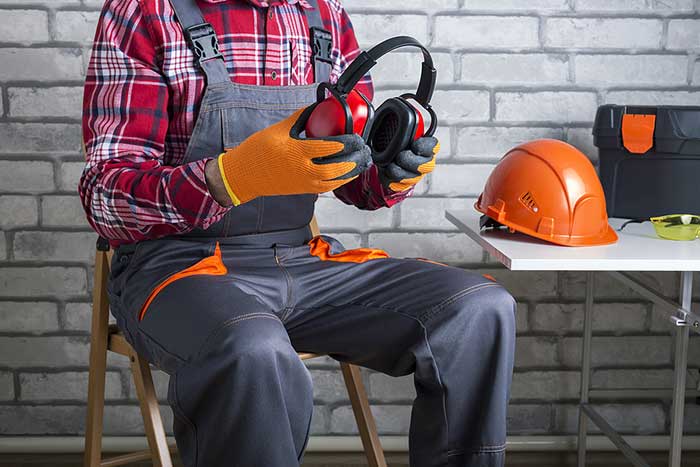Restoration and remediation technology is a vital component of providing quality services to property owners experiencing disaster and damage to their structures. Tech developments continue to impact the industry and bring new methods for improving response times, tracking, reporting, and quality services. Smart technology is connecting systems in ways that bring profitability and job satisfaction to a growing industry at a critical time.

Equipment
Equipment with smart, connected technology is positively influencing fire, mold, and water restoration efforts in the industry as new products provide enhanced reporting and performance.
In properties with water damage, remote monitoring allows for real-time data collection from on-site sensors measuring humidity and temperature as well as other moisture readings. Technology continues to advance, and it is now possible to connect equipment so that sensor readings can turn drying equipment off and on as needed.
Mold damage requires a collection of tools and technologies to assess the damage, treat the affected areas, and repair damage caused by the mold invasion and cleanup efforts. The ultimate goal is to increase airflow and decrease moisture, all the while filtering the air. Air blowers and dehumidifiers work together, reducing relative humidity and eliminating the conditions for mold growth. Air scrubbers are implemented to filter toxic air and are equipped with HEPA technology trapping particles down to 0.3 microns. These machines are often used to filter smoke as well in fire-damaged structures.
Stain removers bring areas damaged by mold back to pre-loss conditions and can be employed through three methods—hydrogen peroxide, bleach, and peracetic acid. Each method has been refined as technologies improve, and the outcomes are variable but effective. Moisture meters provide information on the moisture content in building material to ensure it’s at an acceptable, material-specific dampness level.
When disaster recovery efforts are in play, the recent use of drone technology has been a gamechanger in assessing property damage safely and expeditiously. Providing automated images and potential measurements of damaged spaces brings first-response timeliness without putting workers in harm’s way. As a relatively new technology, the rules and laws surrounding drone use continue to evolve, and it’s important to explore their potential while complying with local, regional, and national law.
Personal Protective Equipment
Personal protective equipment, or PPE, provides the body with a layer of contaminate-specific protection to avoid injury and contact with toxic substances. Fire, water, and mold damage often require unique protective considerations, but there are standard elements of the protective equipment that should be considered on all jobs sites.
PPE is required to safely deal with mold work, protecting those onsite from fungus and toxins present in the air and on surfaces. Advancements in respiratory protection and body coverings are ongoing, and what was considered top-of-the-line a few years ago often become obsolete in the world of PPE. From a quality air-purifying mask that filters dangerous air particles to breathable suits that provide appropriate barriers against toxic surfaces and the skin, mold remediation is dangerous in unique and lasting ways that require constant vigilance in wearing personal protective equipment.
Productivity, Planning and Reporting Technology
As restoration companies partner with a growing network of insurance providers, TPAs, subcontractors, and claims systems, it’s become essential to migrate from the cumbersome paper-heavy filing and reporting to cloud-based reporting systems. Reporting and tracking affect the process from claim submission to the final product as supply orders, man-hours, claim specifications and estimates shuffle back and forth between insurance carriers and contractors. Staying connected is the name of the game, and it requires equipment with state-of-the-art data collection and management. The long-term benefits of exchanging paper for electronic filing systems can be felt in reduced overhead costs, streamlined job times, and overall positive outcomes for property owners.
Coordinating teams, jobs and equipment is easier as cloud-based tracking and scheduling systems replace calendars and un-integrated software. What was once a complicated collection of calendars, equipment lists, and job timelines can now be centralized into software that keeps teams on track and lends accountability to timelines and job outcomes. Covid concerns remain, and an added bonus of these software programs is coordinating information online to minimize in-person interaction while creating a real-time view of all systems involved in any job. This makes relevant data available to insurance carriers and property owners.
Bluetooth has been a gamechanger in tech use for years, and it’s no longer limited to taking calls and streaming music. Equipment important to remediation efforts can now be connected via Bluetooth to collect equipment readings and data essential to reporting efforts. From air movers to dehumidifiers, detailed reports on moisture content, equipment usage, and even location are collected and centralized in online reports.
The continued advancement of cleaning, reporting, planning, and protective technologies benefiting restoration companies is revolutionizing workflows and performance in the industry. As companies work with improved equipment and in conditions made safer by air purifiers and proper PPE, one component of the business must never change, as BluSky Restoration Contractors—a national leader in restoration and remediation—can attest.
“The industry continues to benefit from technological advancements, no doubt,” said a representative from BluSky. “What remains at the forefront of a quality restoration experience is the company’s ability to serve property owners through quality customer care and bringing their property back to pre-loss conditions. Technology is the tool that allows the business to streamline the details and focus primarily on that outcome.”
The smart aspect of technologies is changing the game for restoration companies of every size, and the ultimate outcome is a quality job, clear and standard communication, and satisfied property owners.
